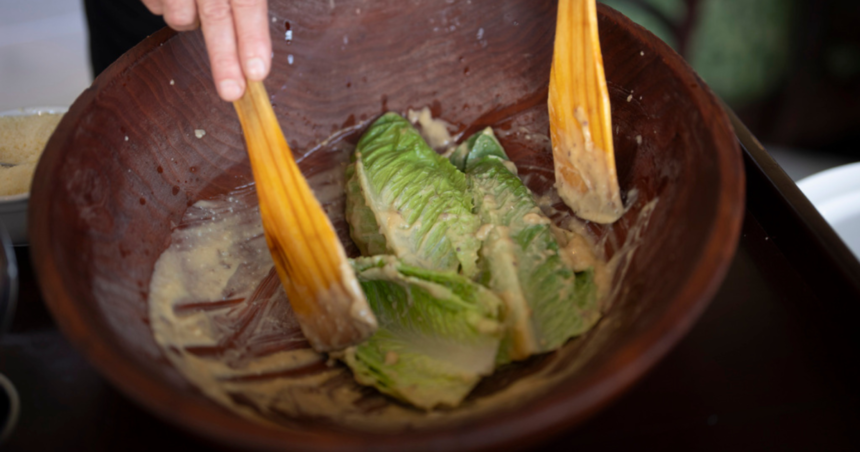Caesar salad has a special milestone: It’s turning 100.
Italian immigrant Caesar Cardini is credited with creating the dish on July 4, 1924, at his restaurant, Caesar’s Place, in Tijuana, Mexico. It was a hot night, and Cardini was struggling to serve a large number of Californians who had crossed the border to evade Prohibition.
In the midst of the dining room, Cardini mixed whole Romaine lettuce leaves with ingredients he had on hand, such as garlic-infused oil, Worcestershire sauce, lemons, eggs, and Parmesan cheese. Thus, the Caesar salad was born.
Tijuana is planning to honor the anniversary with a three-day food and wine festival this month, along with the unveiling of a statue of Cardini. Caesar’s, an upscale restaurant Cardini opened in Tijuana a few years after inventing the salad, still serves up to 300 Caesar salads daily.
Unlike other menu items from the early 20th century, Caesar salad has stood the test of time. Approximately 35% of U.S. restaurants offer Caesar salad on their menus, and nearly 43 million bottles of Caesar salad dressing, totaling $150 million in sales, have been sold in the U.S. in the last year.
According to Beth Forrest, a professor at the Culinary Institute of America, it took some time for Caesar salad to become popular. The recipe didn’t appear in the “Joy of Cooking” until the 1951 edition. In the 1960s and 1970s, Caesar salad was often prepared tableside, adding an element of sophistication.
Forrest explains that Caesar salad appeals to the Western palate due to its combination of crispy and creamy textures. The egg yolks and Parmesan cheese are rich in glutamate acids, giving the salad its savory “umami” flavor.
Various adaptations of Caesar salad have helped maintain its popularity. Chefs incorporate ingredients like chicken, bacon, or salmon, and use alternative dressings like miso paste or tofu.
At Beatrix, a chain of restaurants in Chicago known for healthier comfort food, chef Andrew Ashmore combines yogurt-based dressing with capers, parsley, lemon vinaigrette, and champagne vinegar in the salad base. The salad features little gem lettuce, baby arugula, bread crumbs, and Grana Padano cheese.
Cheyenne Cohen/AP
“It’s our number one selling salad, and it has been since we opened 11 years ago,” Ashmore said. “I couldn’t try to take it off the menu if I wanted to.”
Cardini was very particular about his recipe. In an interview with the Honolulu Star-Bulletin in 1987, his daughter Rosa Cardini mentioned that he used only the tender inner leaves of Romaine lettuce, kept them whole for diners to pick up, boiled the eggs for one minute before adding them, and omitted anchovies.
The origins of the salad are debated, with some attributing it to Livio Santini’s mother, while others claim Cardini’s brother, Alex, was the creator. Alex supposedly made a version with limes and anchovy paste, known as “Aviator’s Salad,” for airmen from a San Diego base.
Forrest notes that the recipe shares similarities with old Italian dishes like pinzimonio and bagna cauda from Cardini’s birthplace in Piedmont.
When asked about the salad’s history, Caesar’s in Tijuana did not respond to The Associated Press, but the restaurant acknowledges Livio Santini on its website.
After the end of Prohibition, business declined in Tijuana, prompting Caesar Cardini to move his family to Los Angeles in 1935. They began bottling Caesar dressing at home before establishing Caesar Cardini Foods Inc.
Rosa Cardini took over the family business after her father’s passing in 1956, expanding to offer 17 other dressings. T. Marzetti acquired Cardini Foods in 1996 and continues to sell the Caesar Cardini’s brand dressings.




